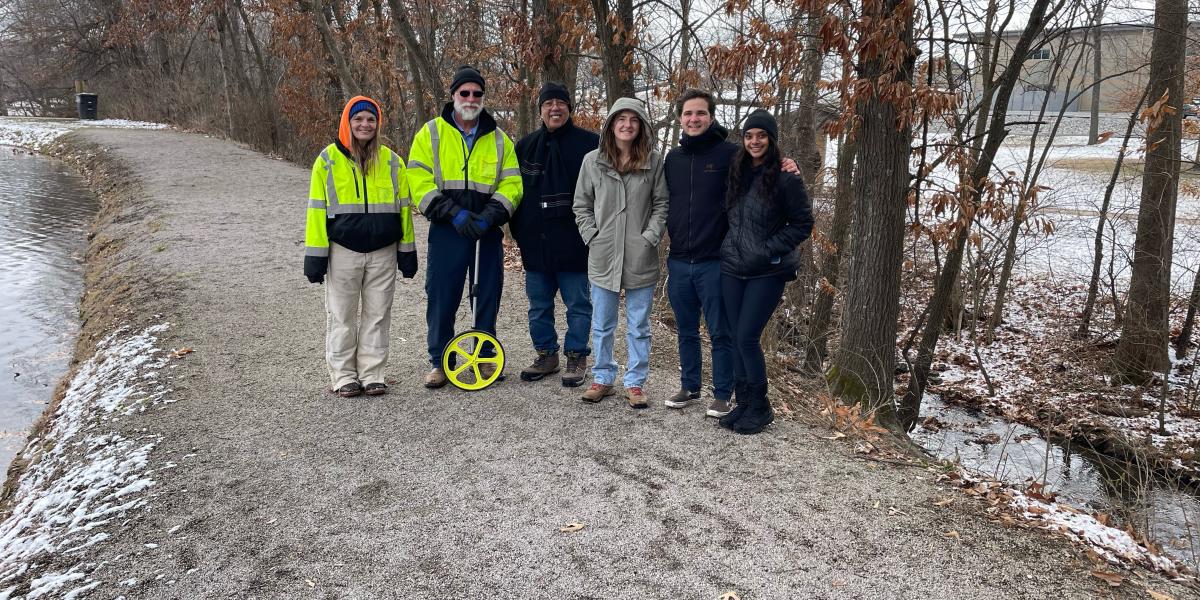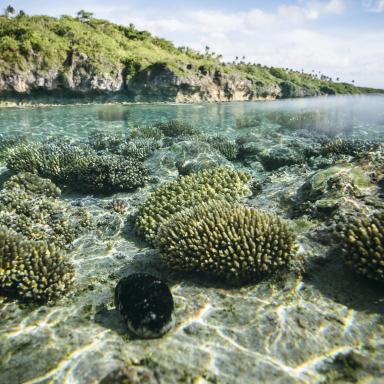
Environmental internships that connect university students with underserved communities is a win-win. Communities benefit from the contributions of students’ skills and knowledge, and students gain a real-world understanding of how environmental problems and solutions play out in under-resourced communities.
This win-win relationship is the motivation behind the recent partnership between emLab and the Community and College Partners Program (C2P2), a non-profit that matches students with communities for mutual gain. C2P2 has partnered with over 70 colleges and universities in more than 150 projects from Alaska to the Bahamas and a central priority is community-driven work. C2P2 asks communities what they need, instead of telling them what students will provide. The idea behind this principle is that underserved communities understand their needs, they just often lack the technical support to evaluate and execute solutions.
C2P2 and emLab began a pilot partnership in October 2022 with a project based in Fulton, Missouri, an under-resourced, rural town about 100 miles west of St. Louis. Fulton and other areas in the Missouri River Basin have experienced more frequent and intense extreme precipitation events since 1950, causing challenges associated with flooding and storm water management throughout the region1. According to the Fulton City engineer, recent flash floods have taken a toll on local infrastructure, including a levee in Veteran’s Park, a popular community recreation destination in the center of town. The natural levee is situated between a creek and a small recreational lake, and has become deeply undercut due to flood-induced overtopping. This has put the levee in danger of failing entirely, which would inundate the locally-important park and community resources.
The levee erosion prompted the need for UCSB student support through the emLab-C2P2 partnership. Three UCSB environmental studies undergraduate students, Sydney Hanning, Mariam Ziauddin, and Darren Saadat, were enlisted to research and present a recommended path for both strengthening Fulton’s eroding levee in the short-term and protecting the area against extreme precipitation events in the future.
When exploring potential solutions, the students had to account for a set of confounding issues unique to this specific levee, including limited accessibility for excavators and an ash borer (a type of insect) infestation. With these in mind, students gathered information about the problem and potential solutions through an extensive web search, literature review, and expert interviews. They also met several times with city engineering staff and C2P2 Executive Director Mike Burns via Zoom to discuss data and information about the levee and potential solutions.
To further understand the on-the-ground dynamics, students traveled to Fulton in January 2023 to see the site of the levee and meet city staff. Insights from the trip were vital to the students’ decisions about recommendations, as the levee was steeper and more undercut than the students had previously judged from photos. “The site visit highlighted to us how much more severe the damage to the dam was than we had initially anticipated through pictures and measurements,” wrote student intern, Darren Saadat. “This illuminated to me how truly essential it is to visit a project site in person when conducting community-oriented projects.”
In a 27-page report, the students detail their recommendation - a multi-stage approach to short- and long-term levee management, including rock toe installation, regrading of levee banks, vegetation restoration, jute mat installation, and check dam creation. The report describes each part of the solution in detail, and provides timelines, instructions for implementation, and cost tables so Fulton can be “shovel ready.”
Students presented their final recommendations to Fulton on February 28, which was received with enthusiasm. The City engineer and his staff were particularly impressed at how well students were able to listen to the nuanced facets of the issue, adapt the solutions to the new insights gained during the students’ trip to Fulton, and communicate both the problem and solutions clearly and effectively.
The next step for Fulton will be to secure grant funding to implement a solution to the eroding levee, for which the students’ report will be crucial. While Fulton may be able to directly implement the students’ solution, other communities facing similar erosion issues may also use the report and adapt the approach to meet their needs.
Through this project, the students gained an important window into how environmental planning and engineering work is done on a local level.
“My trip to Fulton and work with C2P2 has been one of the highlights of my undergraduate experience,” wrote student intern, Sydney Hanning.
1Paul Flanaganl, Mahmood Rezaul, “Spatiotemporal Analysis of Extreme Precipitation in the Missouri River Basin from 1950 to 2019,” Journal of Applied Meteorology and Climatology. (2021): 811-827. DOI: 10.1175/JAMC-D-20-0212.1



